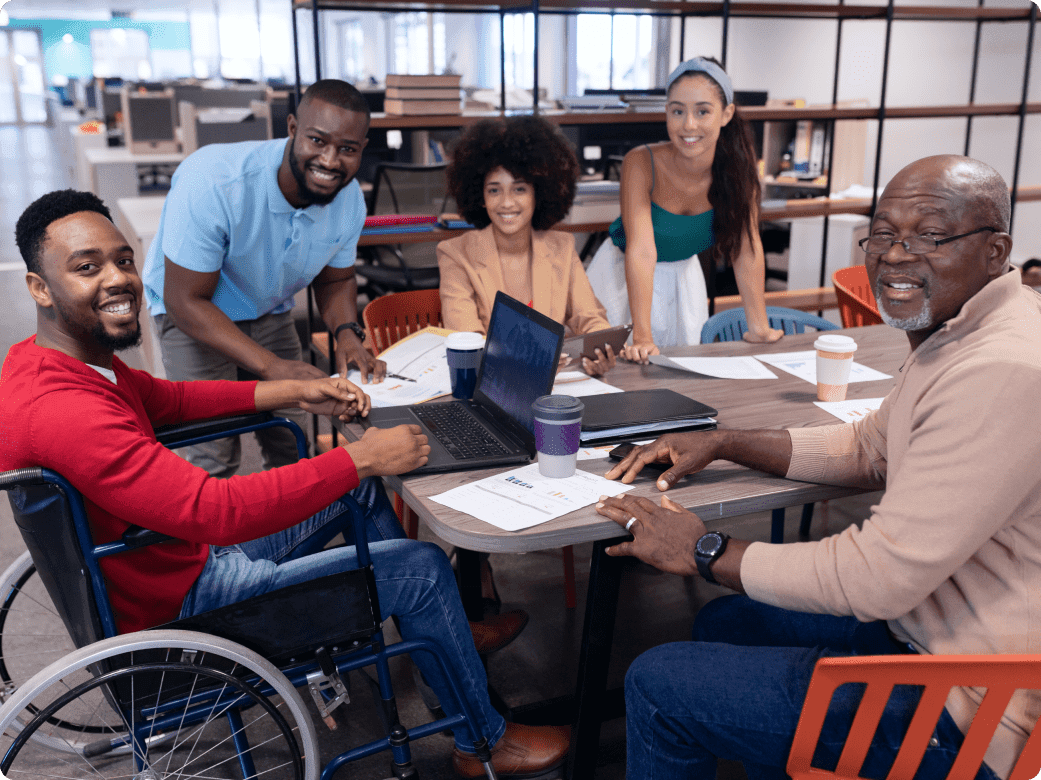Accessibility
Accessibility is the practice of creating inclusive learning opportunities for all learners. In LINC programs, it involves designing enrolment processes, instruction, learning resources and learning environments for people who experience disabilities as well as for all learners.
Learning a new language can be especially challenging for newcomers with disabilities (including mobility, vision, learning, mental health and developmental) or with neurodivergence (including autism and ADHD). LINC programs need to recognize barriers to accessibility and create learning environments that are safe, welcoming, supportive and accommodating for all learners. Note that it is a learner’s choice to disclose whether or not they have a disability or are neurodivergent, and what the details of their disability or neurodivergence are. Some learners may also have an undiagnosed disability or form of neurodivergence. Each person’s experience is unique, and disability and neurodivergence are also impacted by the ways they intersect with a person’s other identities (gender, ethnicity, age and so on). Refrain from making assumptions about a person and what their needs are or should be.
Universal Design for Learning (UDL)
Universal Design for Learning (UDL) can support you in creating accessible, inclusive spaces for your learners. The focus of UDL is to change the design of the environment rather than the learner. The UDL framework guides the design of learning environments and supports all learners in taking ownership of their own learning.
Some ways you can ensure learners with disabilities or neurodivergence can fully participate in LINC programs include:
- Making accommodations to the physical environment (building accessibility, moveable desks and chairs, and so on)
- Providing assistive technologies when needed
- Providing quiet learning spaces for learners with sensory issues
- Providing or connecting learners with other support services
- Implementing policies and standards that minimize discrimination and hardship based on learners’ disabilities
- Providing and/or supporting professional development opportunities that address accessibility and inclusivity in the classroom
As an Instructor, you can begin by learning about the needs of the learners in your class. Analyze the classroom or online learning space. Does it have any barriers for learners? Think about the instructional materials you use. Are they appropriate for all learners? How can they be modified to be more accessible? Consider using an accessibility checklist when creating or using content in your lesson planning.
Literacy Learners
Literacy Learners who have a learning disability or another form of neurodivergence are often difficult to formally diagnose. Diagnostic tools do not always have the ability to distinguish between a learning disability and lower literacy levels, especially in a learner’s second language. Whether or not a literacy learner with a learning disability or another form of neurodivergence, they still require specific support to thrive in their classes and in their learning.
Useful Resources and References
Related Essential Components
Becoming familiar with these resources can help you identify strategies for creating accessible and inclusive classrooms for all learners:
- An accessibility checklist when creating or using content on Avenue or other online sources: W3C’s Web Content Accessibility Guidelines
- Alberta Teachers of English as a Second Language (ATESL) has a resource on accessibility: ATESL Best Practices: Supporting Learners with Diverse Needs
- Ontario Council of Agencies Serving Immigrants (OCASI): Accessibility Toolkit
- Affiliation of Multicultural Societies and Service Agencies of BC (AMSSA) includes information on accessibility: A Principles-based Approach to Supporting LINC Learners
References
- ATESL. (2 022). ATESL Best Practices for Adult EAL and LINC Programming in Alberta: Supporting Learners with Diverse Needs. https://www.atesl.ca/resources/best-practices-adult-eal-and-linc-programming-alberta/supporting-learners-with-diverse-needs-and-abilities/
- CAST. (2018). Universal Design for Learning Guidelines version 2.2. http://udlguidelines.cast.org
- Indiana University of Bloomington. (2023). Creating Accessible Classrooms. https://citl.indiana.edu/teaching-resources/diversity-inclusion/accessible-classrooms/index.html


